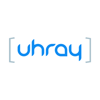Web Scheduling Software Dev for Property Management Co
- Custom Software Development
- $50,000 to $199,999
- Nov. 2018 - Ongoing
"I most appreciate the level of accessibility that Uhray provides to us."
- Real estate
- Kansas City, Missouri
- 1-10 Employees
- Phone Interview
- Verified
Uhray provides a property management company with ongoing software development services. The team developed web-based appointment management software with features to streamline lead messaging and scheduling.
Uhray augmented internal capacities to service leads, increasing the capture rate from roughly 60%–95% of leads. The tool received positive feedback from users who praised its usability. The team is available to troubleshoot challenges no matter the time of day, which ensures a valuable partnership.

